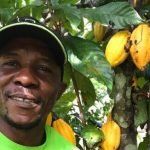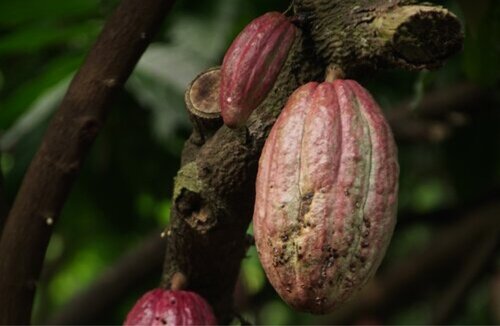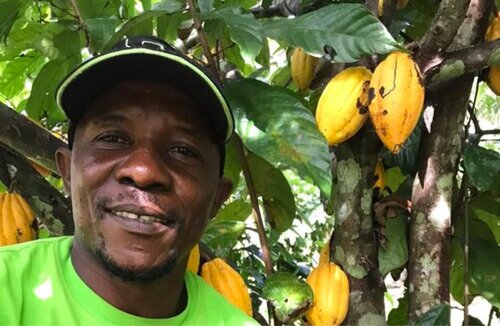
Facebook Marketing for Agro-Processors: A guide for reaching customers via Facebook
January 9, 2024
Cocoa Buyers, Consider the Farmer
January 9, 2024Katinka Harsanyi, Kim Beevers

“The cocoa sector will not be sustainable if farmers are not able to earn a living income.” The closing statement of the 4th World Cocoa Conference reflects widespread public awareness and acknowledgment from farmers, traders, confectionary makers, governments, and consumers that the international trade in cocoa must change.
Cocoa is a smallholder farmer crop, with great potential to contribute to rural development in producing countries. In Liberia, where cocoa is the third largest agricultural export, about 30,000 smallholder farmers rely on cocoa for their main source of income. Globally, about 90% of the world’s cocoa is produced by farmers working on less than 5 acres. In total, around six million people earn their livelihood through cocoa farming.
The cocoa and chocolate industry is growing. In 2017, the global cocoa and chocolate market was valued at US $43.13 billion. By 2025, it is anticipated to grow at a rate of 5.7% to US $67.22 billion.
Despite growth trajectories, not enough has changed for smallholder farmers. Significant and widespread poverty along with concomitant challenges such as deforestation and child labor, pose major challenges for the cocoa industry and threaten its sustainability.
This is a complex problem; many issues contribute to persistent poverty and industry inequity. Significant amongst these, however, is cocoa pricing – from risk to equity to transparency.
So, what is wrong with cocoa prices?
> Unequal share of value. In the 1970s, the cost of cocoa accounted for 50% of the value of a chocolate bar. However, today, only 6% of the final value of chocolate goes to farmers. By contrast, 35% of value is captured by manufacturers and 44% by retailers of chocolate.
It is also worth noting that the further up the value chain one goes, the more concentrated the cocoa sector is. So – for example – while production is split across millions of smallholder farmers selling small amounts of cocoa, just three international firms account for 60% of global cocoa processing. With buying power concentrated among so few processors, the ability to negotiate better pricing and terms is limited.
> Unequal share of risk. Since the 1980s, retail prices for chocolate have risen quickly when the price of cocoa has gone up. However, retail prices for chocolate have also only dropped off slowly (if at all) when the price of cocoa has gone down.
Organizations at the end of the supply chain can make profits from asymmetrical price movements. Those in the middle are typically able to hedge their risk. For example, it is estimated that over the 2017/2018 season, purchasing departments for processors and confectionary makers saved USD 4.7 billion owed to falling cocoa prices.
However, in most countries – including Liberia – farmers are immediately exposed to fluctuating prices. They have very little power to mitigate their impact.
> Small farms, low productivity. Focusing only on the value captured prior to processing, farmers may receive a nominally high share of the FOB (Free on Board) price of cocoa, but still not be able to earn a living income. This is because average farm sizes and production levels are low. As cocoa is a seasonal crop, farmers often take loans to cover key household expenses during the off-season such as school tuition, medical bills, and food. This perpetuates a cycle where they are then unable to save and thereby invest in the productivity of their farms. The farmers’ negotiating position is also further weakened, as they begin the season desperate for funds.
> Lack of transparency and information. In many countries, the cocoa trade from farm to export has been characterized by a large number of informal middlemen purchasing from farmers and selling onto other larger agents or exporters. At the same time, cooperatives and other farmer interest groups are not typically organized enough to effectively advocate on behalf of and disseminate information to their members. A lack of transparency and effective information dissemination through the supply chain makes it easier for unscrupulous trading practices to go undetected and harder for farmers to know if they are being rewarded fairly – including for the quality of their cocoa.
Pricing issues within the cocoa supply chain can seem overwhelming. The structural problems outlined above, though, can be addressed in part by companies in the middle and end of the value chain.
In Liberia, GROW collaborates with exporters, buyers, and cooperatives to rethink their buyer, supplier, and farmer engagement approaches. Our exporter partners have developed transparent, negotiated and fair agreements with their suppliers. Some are also coupling these with value-added services such as farmer training, cocoa transport, and financing.
Though important first steps toward restructuring the middle and end of the value chain in Liberia, addressing competitive financing, stronger management teams, and new buyer entrants, as some examples, that hold back performance and competition at this level are still needed.
GROW Liberia © 2021 All rights reserved



